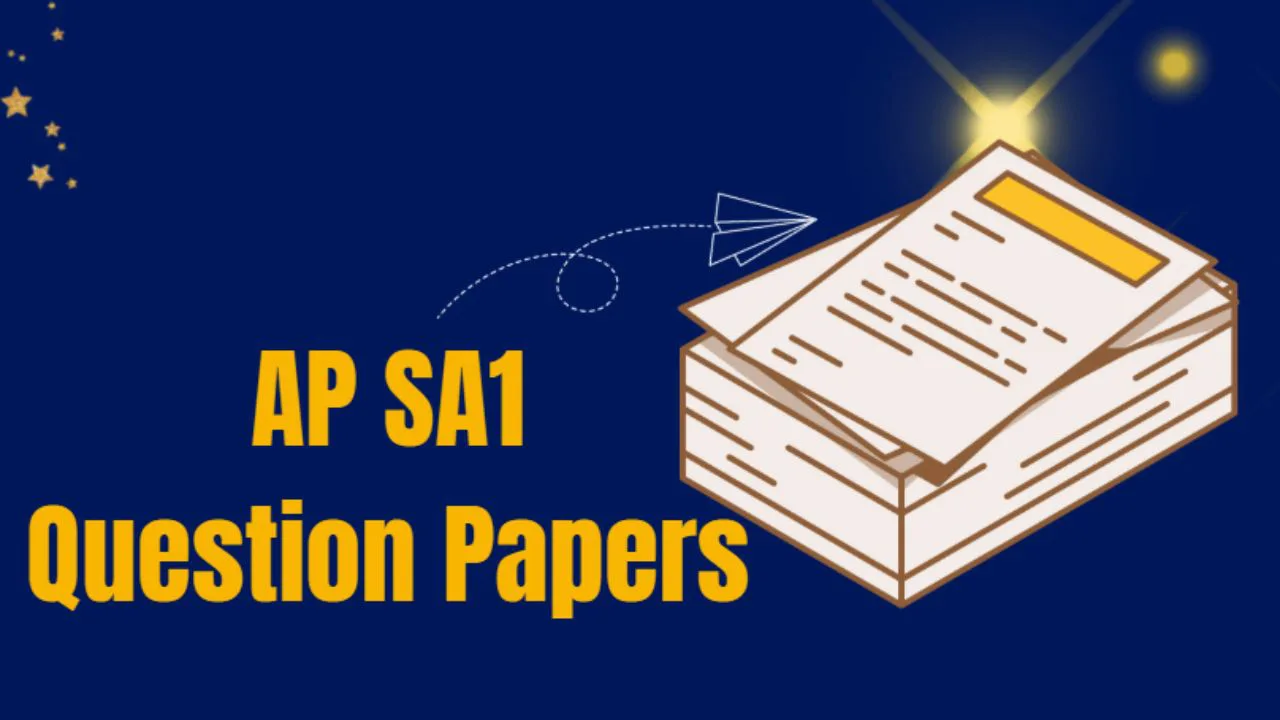TS & AP EAMCET/ EAPCET Maths Chaperwise Bit Bank and Study Material are given on this page. This page in Schools360 is fully dedicated to the EAMCET / EAPCET Mathematics Study Plan. Students preparing for EAMCET or EAPCET must read this article completely to get a Study Plan to be followed for Maths because we have Provided Lesson by lesson Previous bits and model Bits from 1st-year and 2nd-year intermediate.
- Mathematics Important Topics for EAMCET/EAPCET 2025
- Mathematics has 50% weightage in the exam
- The Mathematics syllabus can be divided into Algebra, Calculus, Geometry, Vector Algebra and Trigonometry.
- The principles in trigonometry are very important
- Students should focus on Limits and Continuity, Differentiation, Applications of Derivatives, Integrations, Define Integral, and Differential Equations.
- Geometry: 2D, 3D geometry, locus, transformation of access, straight lines, circle, system of circles, parabola, ellipse, direction cosines, direction ratios, plane, etc.
- Algebra: Functions, Mathematical Induction, Matrices, Complex Numbers, Demore Theorem, Quadratic Expression, Theory of Equations, Permutations and Combinations, Binomial Theorem, etc.
- Trigonometry: Ratios up to transformations, trigonometric equations, inverse trigonometric functions, hyperbolic functions, and properties of triangle topics.
- Five or six questions come from vector algebra: Addition of Vectors, Product of Vectors, Measures of Dispersion and Depression in Probability, Probability, Random Variables, Probability Distributions.
Focus on speed and accuracy
EAMCET / EAPCET Maths Detailed Syllabus
ALGEBRA | |
| Functions | Types of functions – Definitions – Domain, Range. |
| Matrices | Types of matrices – Scalar multiple of a matrix and multiplication of matrices – Transpose of a matrix – Determinants (excluding properties of determinants) – Adjoint and Inverse of a matrix – Rank of a matrix – Solution of simultaneous linearequations (Excluding Gauss Jordan Method). |
| Complex Numbers | Complex number as an ordered pair of real numbers- fundamental operations – Representation of complex numbers in the form a+ib – Modulus and amplitude of complexnumbers–Illustrations – Geometrical and Polar Representation of complex numbers in Argand plane-Argand diagram. |
| De Moivre’s Theorem | De Moivre’s theorem- Integral and Rational indices – nth roots of unity- Geometrical Interpretations–Illustrations. |
| Quadratic Expressions | Quadratic expressions, equations in one variable – Sign of quadratic expressions – Change in signs – Maximum and minimum values, Quadratic Inequations. |
| Theory of Equations | The relation between the roots and coefficients in an equation – Solving the equations when two or more roots of it are connected by certain relation – Equation with real coefficients, occurrence of complex roots in conjugate pairs and its consequences, Transformation of equations- Reciprocal equations. |
| Permutations and Combinations | Fundamental Principle of counting – linear and circular permutations- Permutations of ‘n’ dissimilar things taken ‘r’ at a time – Permutations when repetitions allowed – Circular permutations – Permutations with constraint repetitions – Combinations-definitions, certain theorems. |
| Binomial Theorem | Binomial theorem for positive integral index, Binomial theorem for rational Index (without proof). Approximations using Binomial theorem |
| Partial fractions | Partial fractions of f(x)/g(x) when g(x) contains non –repeated linear factors – Partial fractions of f(x)/g(x) where both f(x) and g(x) are polynomials and when g(x) contains repeated and/or non-repeated linear factors – Partial fractions of f(x)/g(x) when g(x) contains irreducible factors. |
| TRIGONOMETRY | |
| Trigonometric Ratios up to Transformations | Graphs and Periodicity of Trigonometric functions – Trigonometric ratios and Compound angles – Trigonometric ratios of multiple and sub- multiple angles – Transformations – Sum and Product rules. |
| Hyperbolic Functions | Definition of Hyperbolic Function – Graphs – Definition of Inverse Hyperbolic Functions – Graphs – Addition formulae of Hyperbolic Functions. |
| Properties of Triangles | Relation between sides and angles of a Triangle – Sine, Cosine, Tangent and Projection rules- Half angle formulae and areas of a triangle–In-circle and Ex- circle of aTriangle (excluding problems related to heights and distances). |
| VECTOR ALGEBRA | |
| Addition of Vectors | Vectors as a triad of real numbers – Classification of vectors – Addition of vectors – Scalar multiplication – Angle between two non-zero vectors – Linear combination of vectors – Component of a vector in three dimensions – Vector equations of line and plane including their Cartesian equivalent forms. |
| Product of Vectors | Scalar Product – Geometrical Interpretations – orthogonal projections – Properties of dot product – Expression of dot product in i, j, k system – Angle between two vectors – Geometrical Vector methods – Vector equations of plane in normal form-Angle between two planes- Vector product of two vectors and properties- Vector product in i, j, k system- Vector Areas . |
| MEASURES OF DISPERSION AND PROBABILITY | |
| Measures of Dispersion | Range – Mean deviation – Variance and standard deviation of ungrouped/grouped data, coefficient of variation and analysis of frequency distribution with equal means but different variances. |
| Probability | Random experiments and events – Classical definition of probability, Axiomatic approach and addition theorem of probability – Independent and dependent events – conditional probability- multiplication theorem and Baye’s theorem. |
| Random Variables and Probability Distributions | Random Variables – Theoretical discrete distributions – Binomial and Poisson Distributions. |
| COORDINATE GEOMETRY | |
| Locus | Definition of locus –Illustrations-To find equations of locus-Problems connected toit. |
| The Straight Line | Revision of fundamental results – Straight line – Normal form – Illustrations – Straight line – Symmetric form – Straight line – Reduction into various forms – Intersection of two Straight Lines – Family of straight lines – Concurrent lines – Condition for Concurrent lines – Angle between two lines – Length of the perpendicular from a point to a Line – Distance between two parallel lines – Concurrent lines – properties related to a triangle. |
| Pair of Straight lines | Equations of pair of lines passing through origin – angle between a pair of lines – Condition for perpendicular and coincident lines, bisectors of angles – Pair of bisectors of angles (excluding proofs of all the theorems only) – Pair of lines – second-degree general equation – Conditions for parallel lines – the distance between them, Point of the intersection of pair of lines – Homogenizing a second-degree equation with a first-degree equation in x and y. |
| Circle | Equation of circle -standard form-center and radius equation of a circle with a given line segment as diameter & equation of a circle through three noncollinear points – parametric equations of a circle – Position of a point in the plane of a circle – the power of a point-definition of tangent-length of tangent – Position of a straight line in the plane of a circle-conditions for a line to be tangent – chord joining two points on a circle – equation of the tangent at a point on the circle- point of contact-equation of normal-Chord of contact- pole and polar-conjugate points and conjugate lines- equation of chord with given middle point, Relative position of two circles- circles touching each other externally, internally common tangents –centers of similitude- equation of pair of tangents from an external point. |
| System of circles | Angle between two intersecting circles –condition for orthogonality – Radical axis of two circles- properties- Common chord and common tangent of two circles –radical centre – Intersection of a line and a Circle. |
| Parabola | Conic sections –Parabola- equation of the parabola in standard form-different forms of parabola- parametric equations, Equations of tangent and normal at a point on the parabola (Cartesian and Parametric)- conditions for a straight line to be a tangent. |
| Ellipse | Equation of ellipse in standard form- Parametric equations, Equation of tangent and normal at a point on the ellipse (Cartesian and parametric)- condition for a straight line to be a tangent. |
| Hyperbola | Equation of hyperbola in standard form- Parametric equations – Equations of tangent and normal at a point on the hyperbola (Cartesian and parametric) – conditions for a straight line to be tangent-Asymptotes. |
| Three Dimensional Coordinates | Coordinates – Section formulae – Centroid of a triangle and tetrahedron. |
| Direction Cosines and Direction Ratios | Direction Cosines –Direction Ratios (Excluding angle between two lines). |
| Plane | Cartesian equation of Plane –Simple Illustrations (Excluding angle between two planes). |
| CALCULUS | |
| Limits and Continuity | Intervals and neighborhoods – Limits – Standard Limits–Continuity. |
| Differentiation | Derivative of a function – Elementary Properties – Trigonometric, Inverse Trigonometric, Hyperbolic, Inverse Hyperbolic Function – Derivatives – Methods of Differentiation – Second Order Derivatives. |
| Applications of Derivatives | Geometrical Interpretation of a derivative – Equations of tangents and normals – Angles between two curves and condition for orthogonality of curves – Increasing and decreasing functions – Maxima and Minima. |
| Integration | Integration as the inverse process of differentiation- Standard forms -properties of integrals – Method of substitution- integration of Algebraic, exponential, logarithmic, trigonometric and inverse trigonometric functions – Integration by parts – Integration by partial fractions method – Reduction formulae. |
| Definite Integrals | Definite Integral as the limit of sum, Interpretation of Definite Integral as an area. Fundamental theorem of Integral Calculus. Properties, Reduction formulae, Application of Definite integral to areas. |
| Differential equations | Formation of differential equation-Degree and order of an ordinary differential equation – Solving differential equation by i) Variables separable method, ii) Homogeneous differential equation, iii) Non Homogeneous differential equation iv) Linear differential equations |
AP EAPCET Maths Expected 1st Year Chapter-Wise Weightage
Following table has been prepared by Analysing last 15 Year Data.
| Chapter Names | Expected Weightage |
|---|---|
| Trigonometry | |
| Trigonometric Ratios | 1 |
| Transformations | 1 |
| Multiple & Submultiple | 1 |
| Compound Angles | 1 |
| Periodicity and Extreme Values | 1 |
| Trigonometric Equations | 1 |
| Hyperbolic Functions | 1 |
| Inverse Trigonometric Functions | 1 |
| Properties of Triangles | 3 |
| Coordinate Geometry | |
| 2D Geometry | 2 |
| Transformation of Axes | 1 |
| Locus | 1 |
| Straight Lines | 2 |
| Pair of Straight Lines | 1 |
| Direction Cosines and Direction Ratios | 1 |
| Three Dimensional Coordinates | 1 |
| 3D Lines | 1 |
| 3D Planes | 1 |
AP EAPCET Maths 2nd Year Chapter-Wise Expected Weightage
| Chapter Names | Expected Weightage |
|---|---|
| Coordinate Geometry | |
| Circle | 3 |
| System of Circles | 1 |
| Parabola | 2 |
| Ellipse | 1 |
| Hyperbola | 1 |
| Calculus | |
| Integration | 3 |
| Definite Integrals | 2 |
| Areas | 1 |
| Differential Equations | 2 |
| Algebra | |
| Complex Numbers | 3 |
| De Moivre’s Theorem | 1 |
| Quadratic Expressions | 2 |
| Theory of Equations | 1 |
| Partial Fractions | 1 |
| Binomial Theorem | 2 |
| Permutations and Combinations | 2 |
| Probability | 3 |
| Measures of Dispersion | 2 |
EAPCET Maths Study Material PDF Download
PDF
EAPCET Maths Study Material PDF Download
Click Here| Unit 1 – Algebra | |
| Functions | Click Here |
| Mathematical Induction | Click Here |
| Quadratic Equations | Click Here |
| Theory Of Equations | Click Here |
| Binomial Theorem | Click Here |
| Permutaions And Combinations | Click Here |
| Partial Fractions | Click Here |
| Complex Numbers De Moivre Theorem | Click Here |
| Matrices | Click Here |
| Unit 2 – Coordinate Geometry | |
| Ellipse | Click Here |
| Hyperbola | Click Here |
| Locus | Click Here |
| Change of Axes | Click Here |
| Straight Lines | Click Here |
| 3D Geometry | Click Here |
| Pair Of Lines | Click Here |
| Circles | Click Here |
| System Of Circles | Click Here |
| 2D Geometry | Click Here |
| Parabola | Click Here |
| Unit 3 – Trigonometry | |
| Compound Angles | Click Here |
| Multiple And Submultiple Angles | Click Here |
| Periodicity And Extreme values | Click Here |
| Transformations | Click Here |
| Trigonometric Equations | Click Here |
| Inverse Trigonometric Functions | Click Here |
| Hyperbolic Functions | Click Here |
| Properties Of Triangles | Click Here |
| Trigonometric Ratios | Click Here |
| Unit 4 – Calculus | |
| Limits | Click Here |
| Continuity | Click Here |
| Differentiation | Click Here |
| Applications of Derivatives | Click Here |
| Tangents And Normals | Click Here |
| Indefinite Integration | Click Here |
| Definite Integration | Click Here |
| Areas | Click Here |
| Differential Equations | Click Here |
| Unit 5 – Vectors | |
| Addition of Vectors | Click Here |
| Scala Product of Vectors | Click Here |
| Vector Product of Vectors | Click Here |
| Multiple Products | Click Here |
| Unit 6 – Statistics | |
| Measures of Central Tendency And Dispersion | Click Here |
| Unit 7 – Probability | |
| Probability | Click Here |
| Random Variables | Click Here |








